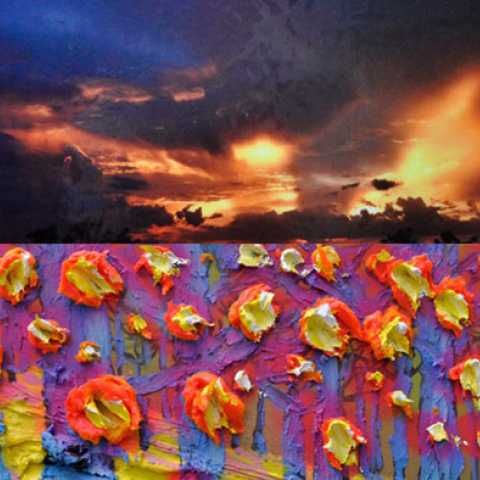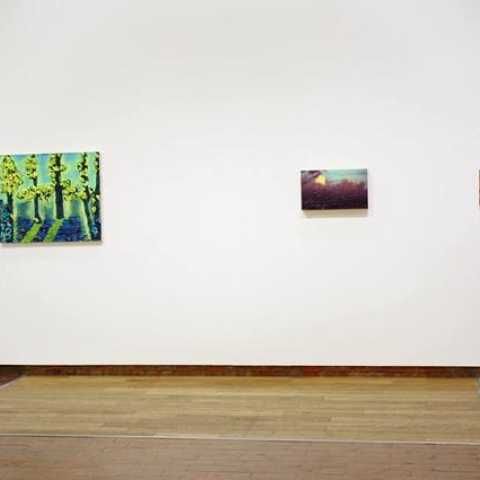Husk
649-651 Commercial Road
London
E14 7LW
United Kingdom



For Gosling the starting point is a photograph of a dramatic sunset that strongly references the romanticized language of holiday brochures and family albums: an aspirational landscape that is at once familiar, even domestic, yet idolized beyond our grasp. As such, Goslings images expose a secret longing for the exotic, the fairy-tale sunset or world beyond the horizon. Like Caspar David Friedrich's vision of an ethereal realm beyond mortal sight, Gosling's vision of wonder is a heavy paradise, bearing down from above the clouds. The manipulated photographs are infused with nostalgia. Indeed, her camera is a family heirloom once belonging to her father and a remnant passed down from a pre-digital age. A veil of lacquer seems to distort our reading of the image whilst preserving the photograph as a precious memento or secular relic.
The recent paintings of Rafal Zawistowski are sourced from photographs of alpine woodlands. Layers of brightly coloured oil paint are thickly applied to the canvas and mixed with heavy medium until the original source image is distorted almost beyond recognition. Like Gosling's work, the images are reminiscent of a vacation brochure or chocolate box painting, perhaps the unholy lovechild of a holiday snapshot and 19th century painting of American sublime. Here the vision of paradise appears to have been contaminated: a toxic glory or ionic pollution like J.G. Ballard's Crystal World.
For both Gosling and Zawistowski the legacies of landscape painting and landscape photography are tropes to be raided and appropriated. Indeed as W.J.T. Mitchell writes,'natural features such as trees, stones, water, animals, and dwellings can be read as symbols in religious, psychological, or political allegories; characteristic structures and forms can be linked with generic and narrative typologies such as pastoral, the georgic, the exotic, the sublime and the picturesque'.2 Gosling and Zawistowski flirt with such associations to present us with a series of images from a broken paradise: a cynical Eden like a careless phenomenon to both repel and seduce the viewer.
A Casual Phenomenology is curated by Alastair John Gordon, Director of Husk Gallery and Project Space at Departure. 7 March - 4 April. Private View Monday 10 March 6-9pm.
